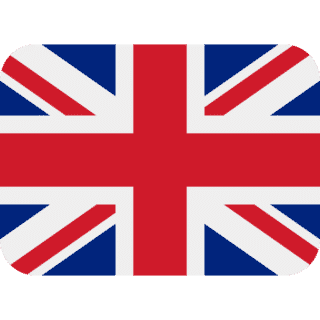Day 1
Dear Parents, The group had an amazing (and exhausting) first day in China. After long queues at Ben Gurion airport and quite a wait to get through security, the group was off and away. The flight was uneventful, which of course means that it was a great flight. Upon arriving in China, everyone donned extra layers of clothing, bundled up in their hats, scarves, and gloves and headed out to explore Beijing. Accompanied by our incredible local tour guide, Chongyan (who goes by Juliet with tourists…), the students are already beginning to learn a little bit of Chinese. So far, they’ve mastered how to say hello. Driving into Beijing from the airport, it was hard to gain an appreciation for just how big Beijing really is. Geographically, the city of Beijing is almost as big as the entire State of Israel, and it is home to 21.5 million people. That’s about two and a half times the population of Israel. As we explore the city and surrounding sites over the next week, we’re sure the sense of enormity will begin to set in. Our first day was truly special with activities and visits to sites that gave us a great first taste of the country. One of our first activities was a tour of the Hutongs. This area is a very old neighbourhood with one level houses built very close together. The houses are very small and are built in a square shape with a communal, interior courtyard. Basically, each side of the square once belonged to an individual family so that four families shared a structure. When they were originally built, they were constructed without bathrooms, so the people living there would use the communal bathrooms and showers that are located every few meters along the streets. These days, the wealthier and politically prominent families live in the Hutongs and each square structure now belongs to an individual family. In order to get a feel for the area, the group snuggled into pairs on a rickshaw ride. With two people per rickshaw, and a Chinese driver pedalling them around, everyone really enjoyed the chance to sit under a blanket and gaze out at the local scenery. Even with the chilly weather, everyone is having a wonderful time! Another highlight of the day was a visit to the home of a local resident who gave everyone a lesson in Chinese calligraphy. Being inside his home was fascinating, but what was more interesting was learning about the Chinese alphabet and a bit about how to form the letters and write our names. If any of the students complain about having a hard time learning Hebrew this year, just remind them how “easy” Chinese is! The group then visited the famous Drum Tower, near to the Hutongs. This building is very tall and the group had to climb a steep, narrow set of stairs to get to the top where they found 24 drums and had a great time seeing the Drum Ceremony. The ceremony takes place every hour on the hour and everyone loved it! The building was built 700 years ago and the purpose of the ceremony is to let everyone know what the time is. The building also has an exhibition of many ancient and very creative gadgets that are designed to tell the time. For example, a boat-shaped incense stand, which is meant to count two hours of sleep during the siestas. You light the incense before you go to sleep, and it burns a string every half an hour. Every string has two bells at its end that fall down and make a noise when the incense gets to it. So every half an hour a bell goes off… You have to be very creative when you don’t have an alarm clock! One way to explore a new culture is to taste the local cuisine. Lunch was great fun as we ate authentic Chinese food (which of course, is referred to as “food” in China.) Most of the students managed well with their chopsticks and many people commented on whether the food was the same or different to what we know as Chinese food in the West. We learned that there are many different varieties of Chinese foods each from a different part of the country, which as we all know is huge. However, everyone had forgotten lunch when we arrived at the Wangfujing Street Night Market. The street is lined with food vendors selling everything you can imagine. You can find everything from snake, scorpion, silk worms, seahorses, and all kinds of other delicacies cooked and ready to serve on a skewer. The sight of these snacks caused many of us to lose our appetites, but a few were daring enough to try a few selections. As the day wound down, we checked into our hotel and everyone was looking forward to going to bed early after an amazing first day. Unfortunately, due to the “Great Firewall of China” it has been hard to send photos to share with you. So attached are a few from the flight and hopefully tomorrow we will be able to send you photos from the first day.
China Day 2
Dear Parents, The group have had another exciting day exploring Beijing. One of the best-known sites in the city is Tiananmen Square, which is the third largest square in the world! We started our day in this massive square, where in the olden days people used to come to see the emperor while surrounded by armed soldiers watching their every move. Much to our surprise, our tour guide made no mention of the Tiananmen Protests that happened in 1989 or the famous “Tank Man” incident. Just as there was government censorship then, there still is today and the local guides are not permitted to talk about it. At the end of the square, above the entrance to the Forbidden City, stands a gigantic painting of Chairman Mao Zedong looking down at the many visitors. When the older generation in China became engaged, it was customary to give a gift of a picture of Mao to the fiancé’s family. We learned a bit about Maoism and his leadership – he served as the Chairman of the Communist Party of China from its establishment in 1949 until his death in 1976. Heading under Mao’s photo, we entered the Forbidden City (it’s no longer forbidden to visitors…) Now, if we thought that Tiananmen Square was big then the Forbidden City we could only describe as humongous! The Forbidden City is the compound where the emperor and his generals lived. It has 9,999.5 rooms and is truly remarkable. According to legend, the emperor was only allowed to have up to this number of rooms on earth, only the ‘palace in the sky’ (as the paradise in heaven was called) could have 10,000 rooms. We passed through the many gates of the city for about 2 hours and still didn’t manage to see everything. The architecture is amazing and the buildings are the best-preserved wooden structures from their time (600 years ago). It was built during the Ming dynasty. We had a great time walking around, listening to our guide and admiring the view! By this point of the day, we began to think that the day’s theme was “huge sites”… Our next stop was Jingshan Park, which is an imperial park covering 57 acres immediately north of the Forbidden City. It was beautiful and since it is situated on a hill, it had some amazing views of the Forbidden City as well. Next we visited a Silk Factory where we learned about silk production. It was really cool. Our guide at the factory, Mary, was very excited to show us photos of all the famous people who wore garments from their factory, including former President George W. Bush. Shopping is another major theme of the trip, which of course makes sense since pretty much everything is “Made in China.” Throughout the trip, the students have been very excited to buy souvenirs and have been talking about what the best gifts for their parents will be. They are so appreciative of the opportunity to be in China! For dinner, we had an authentic Chinese experience of eating Hot Pot. This is basically fondue, but without the cheese or chocolate. Instead, there is a pot of hot water in the center of the table, and everyone cooks their own food. You then fish out your food from the pot and dip it in a variety of sauces. It was fun for everyone! In the evening, we attended a Kung Fu Show. It was incredible!!!! And finally, back at the hotel, we gathered together to light Chanukah candles. Tamar even brought the chanukiah her parents gave her and she lit it for everyone. We’re still having technical difficulties with the internet, but thanks to our tour guide, we’ve managed to send a video to the staff in Israel. We have been filming every day so that we can share our adventure with you. It is currently uploading to YouTube so that you can all watch it. We’ll send you the link shortly. Chanukah Sameach from Beijing!
Dear Parents, Shay-El and Ilay have been busy filming the students’ adventures. As mentioned, we have experienced technical difficulties with the internet in China. Unfortunately, the first video is missing the last 30 seconds. We are sure you will enjoy it anyway and when the group returns, we will upload the complete version. The second video is complete. It looks like they are having a great time!
China Day 3
Dear Parents, There is no doubt that one of the main highlights of any trip to China is climbing the Great Wall… and that is what the group did today! Before starting we didn’t know that climbing the Great Wall of China is a little like a Stairmaster on steroids. As the wall transverses uneven terrain it is not flat, and there are many, many stairs. It is also not one continuous, connected wall but rather it is broken up into pieces with the landscape itself also forming part of the barrier. All in all, it stretches 8,500 kilometers. As we climbed, it was humbling to think about the fact that there are 1 million men buried under the wall who died constructing it. This was at a time when the total population of China was about five million in total, so we are talking about 20% of the Chinese population! At the beginning of the wall there is a stone with a quote from Mao saying that you are not a true hero until you climbed the Great Wall (also, the folks with the Fitbits were like kids in a candy shop, so they motivated everyone to climb as well.) It was incredible. As we began to climb, we were bundled up due to the cold but by the top we were shedding layers (and pounds) from the workout. I’m not sure how we will feel tomorrow morning when we can’t move our feet after climbing all those stairs, but for now, we are pretty content. The wall was much narrower and steeper than we imagined, and the view from it was stunning. From different viewing points, we could see endless miles of the wall across the Chinese countryside. Today we also visited the Ming tombs. The tombs are an area where 13 emperors of the Ming dynasty are buried. The whole region is considered to be very Feng Shui and have a very good flow of energy. The tombs themselves are buried deep inside the mountains, but the Chinese used to go all out with everything they built when the emperor was involved, and the path to the burial place goes for many miles and is spectacular. When we arrived we went through the “Gate of Heaven”. Before you go through it, you first need to concentrate on which foot you enter with, because if you cross with your right foot you will be a girl in the next life and if you cross with your left foot than you are bound to be a boy. When we got to the top we were once again able to see the beautiful mountains – truly a lovely final resting place for the Emperors. Next we walked down the Sacred Road (the road leading to heaven) which leads to the Ming Tombs, commemorating the Emperor known as the Son of the Heaven, who came from heaven to his country along the Sacred Way and then returned to heaven along the same road. The road is lined with 18 animal statues that are around 600 years old. Now, as we all know, many (most?!?) things are labelled “Made in China” and throughout the trip we’ve had a chance to visit a number of factories to see the production of local products. The first one we visited was a jade factory (which is the national stone of China) and there we were able to see how they process the jade into beautiful jewelry and other pieces. Later in the day we visited a cloisonné factory. Cloisonné is a very ancient Chinese art of making plates and vases (and some other stuff) using bronze wires and then coloring in the spaces formed by the bronze. It is a long, long process. Just the art of coloring and painting on the bronze takes 3 years to learn. The designs are very intricate and small so each piece is made with great care and precision. It was really interesting to see the artists working and the amazing finished products. In the evening, we headed to the local Chabad House to participate in a Chanukah activity with the local community. We had the chance to speak to local residents about what it is like to be Jewish in China and we learned that although Judaism is not one of the officially permitted and recognized religions in China, there is really no anti-Semitism in the country. In fact, the Chinese are interested in building stronger relationships with Jews and Israel. They respect our notable contributions to the worlds of science and technology and they are somewhat in awe of Israel. We are looking forward to spending more time with the local Jewish community on Shabbat so we can learn more! Below you can see another great video from our trip!
China Day 4
Dear Parents, Thursday was another exceptional day filled with a variety of sites and activities. We started the day at the Summer Palace, the beautiful royal gardens built for the Emperors’ families to spend their summer months in during the Quing Dynasty. Empress Dowager Tzu-hsi, who is referred to as “The Dragon Lady” used to stay in this palace. According to legend, even though she would eat 120 courses in a meal, she was a very beautiful woman and worked hard on her appearance. We aren’t sure that we’d want to eat so much, even if given the chance, but to each his own… Another fact we learned about the Dragon Lady was that she locked her emperor son inside the Summer Palace for 10 whole years until he died. There are amazing views at the palace so if you have to be locked up somewhere, it is not such a bad option. We also walked through the longest corridor in the world that stretches for 820 yards. The lake on the grounds of the Summer Palace was also beautiful! The group next visited a Pearl Factory. Everyone had a great time watching a demonstration of how the pearls are grown and harvested, as well as a terrific time window-shopping throughout the gallery. There were even some students who bought jewelry (we hope as a thank you present to their moms for sending them on the trip!) Moving on, we headed to the Temple of Heaven, where the emperors used to offer their sacrifices to ensure good harvest. We were surprised to find out that the Temple of Heaven is three times the size of the Forbidden City! It is HUGE! The temple was stunning! It became a UNESCO world heritage site in 1998. From there we went to a Tea House where we sampled different flavors of tea and watched the proper way to prepare it. It was a relaxing and aromatic experience and we enjoyed trying a variety of teas. We finished the evening with a bang! We went to an acrobatics show that was truly spectacular entertainment! The Chinese are known for their limberness and we were amazed at their talent. People flying in the air, through hoops and to unimaginable heights! We held our breath a couple of times during the show when we were sure a serious injury was about to occur on stage, but somehow it didn’t. Not even when 8 motorcycles were driving together in circles inside a huge (but not big enough) ball shaped iron cage! It was awesome! We have another video in the works for you that we will post as soon as we can!
China Day 5 & 6
Dear Parents, The group has safely returned from China after an incredible week! Their final two days in Beijing were just as incredible as the rest of the trip and included a lovely Shabbat with the local Jewish community. On Friday, they began their day at the Lama Temple, which is a set of Buddhist temples that showcase different sized Buddhas. The largest wooden Buddha is 26 meters high and carved from a single tree! It goes 13 meters deep into the ground and 16 meters above it, it is an amazing structure that took 3 years to import and 3 years to carve. Moving on, the group practiced their bargaining skills with a shopping trip to the Silk Market. The market is essentially one big flea market selling all kind of fabrics, leather products, electrical gadgets and basically every replica product that ever existed. Many cool Chanukah presents were bought and everyone had a great time seeing all that was on offer. We headed over to Chabad in the evening, a five minute walk from our hotel, to join the community for tefillot and dinner. The Chabad House is a pretty remarkable structure and includes a restaurant, kosher food market, and a museum which also serves as a synagogue. We were greeted by Rabbi Shimon who spoke to us about the small Jewish community in Beijing and the small Jewish school they have with only 40 children. When we asked him what it is like to run a Jewish Chabad house in a communist country he told us it is a rather complicated task. They have to navigate between practicing Judaism and remaining under the radar and not doing anything that would seem to be opposing the regime. For example, Chinese law prohibits him from performing conversions. We enjoyed seeing the artefacts in the museum and admired the stained-glass windows depicting synagogues which once stood in different cities and towns in China. Furthermore, the Shabbat chicken and potatoes were a welcome sight after having pretty much had our fill of Chinese food this week. On Shabbat, we took advantage of some well deserved time to rest and started our day a little later than the previous days of the trip. In addition to another great meal at Chabad with the local community and other travellers, we also had the chance to participate in a special workshop on Tai Chi. The instructor taught us some basic manoeuvres and a few routines. We found the exercise to be both a good workout and relaxing. And, for beginners, I think we did a pretty good job! Later in the afternoon, we walked to the 798 Art District which was about a half hour away. It was really nice navigating a bit by foot and seeing some of the “regular” parts of the city as well. The art quarter was filled with many local art galleries and art instillations. It’s a really cool, young and informal area and the students strolled around the different galleries really appreciating the art. After Shabbat was over, we capped off the day with a visit to the Olympic Park where the 2008 Olympics were held. We had the chance to see the beautiful Aquatics Center, which is fondly described as the Water Cube, and the National Stadium, known as the Birds Nest. The architecture is really cool and it is a real treat to see the buildings lit up after dark. All in all, we had a wonderful week! And, as great as it was, it’s also great to be back home in Israel!

















